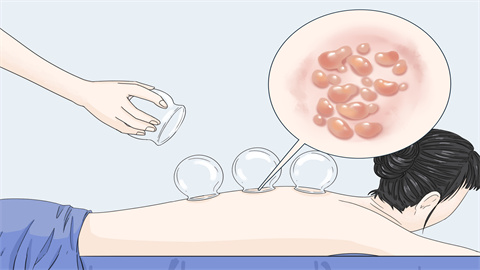Is cupping effective for removing dampness from the body?
Generally speaking, the effectiveness of cupping therapy in removing dampness needs to be determined according to specific circumstances. Cupping works well for external contraction of dampness or when dampness blocks the meridians; however, its effect is limited for internally generated dampness or cases involving severe dampness. Detailed analysis is as follows:

If the dampness is caused by external contraction, such as getting caught in the rain or prolonged exposure to damp environments, or if it results from dampness obstructing the meridians causing shoulder and neck pain, or heaviness in the limbs, cupping therapy can stimulate the skin and meridians through negative pressure, promote the circulation of Qi and blood, help eliminate surface dampness, and alleviate discomfort symptoms effectively.
When dampness originates from internal factors such as spleen and stomach weakness, manifesting as abdominal distension, loose stools, fatigue, etc., cupping alone cannot thoroughly eliminate dampness. This is because such dampness is associated with dysfunction of internal organs and requires regulation methods such as strengthening the spleen and nourishing the stomach. Cupping alone serves only as an adjunct therapy and cannot address the root cause.
To better regulate dampness in the body, daily routines can combine cupping with other methods. For example, when dealing with externally contracted dampness, moxibustion can be used alongside to dispel cold; for internally generated dampness, dietary regulation should be emphasized, including more spleen-strengthening and dampness-resolving foods such as yam and coix seed. At the same time, maintaining moderate physical activity to enhance the body's metabolic capacity and reduce dampness accumulation is also important.






